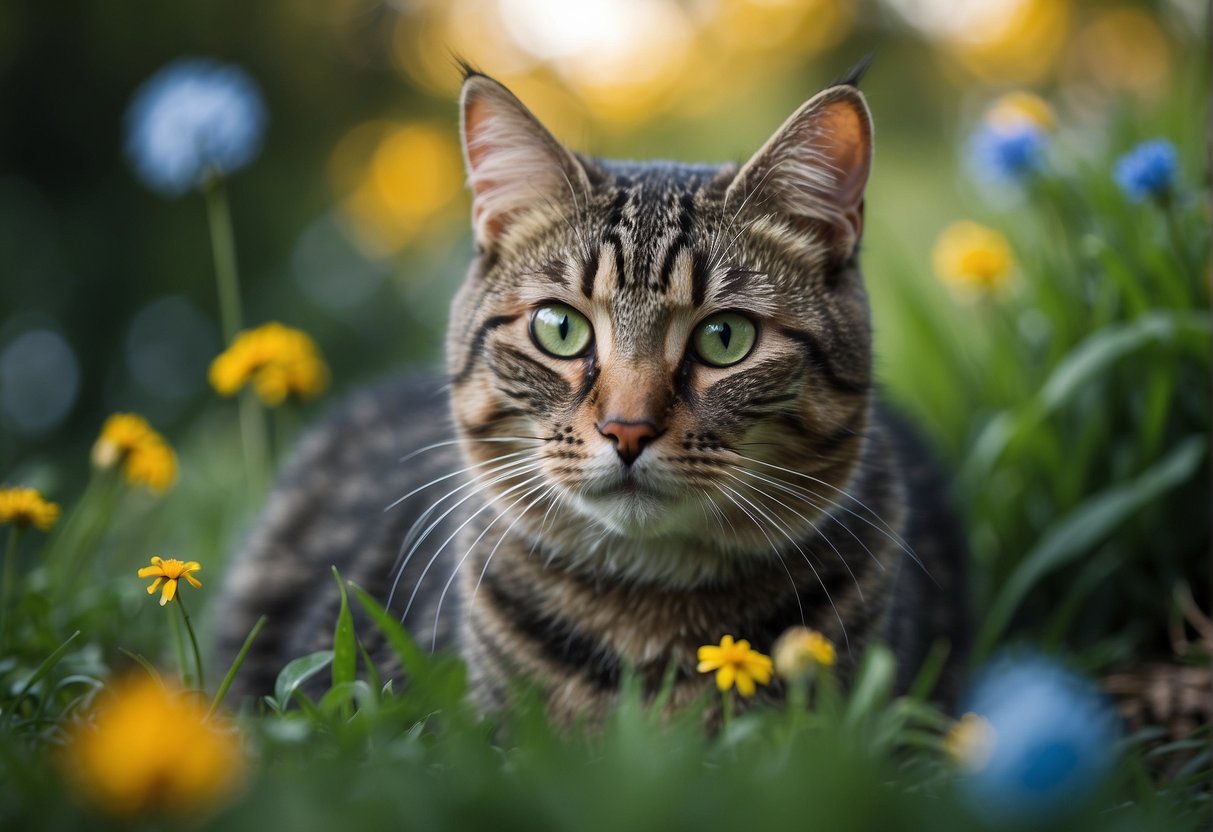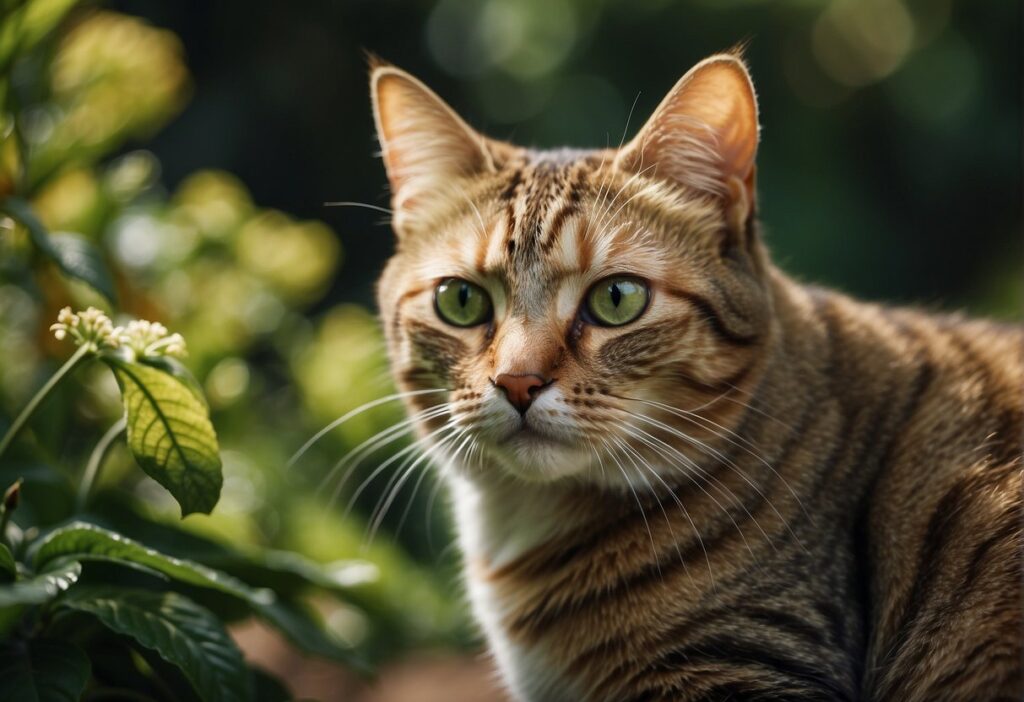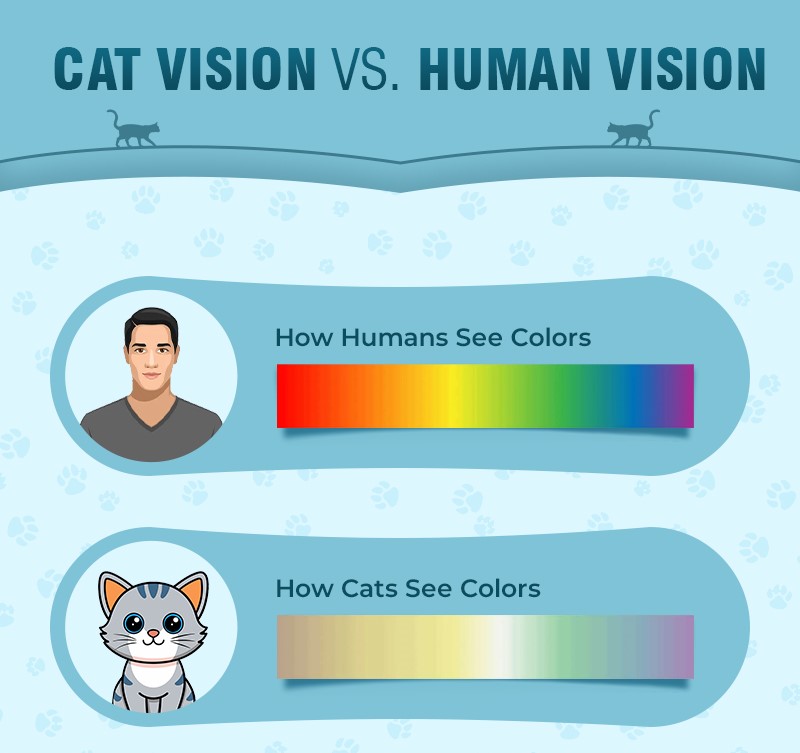While humans often assume that cats see the world similarly to us, their color perception is quite different, shaped by evolutionary needs tied to their role as crepuscular hunters. This article delves into the science of feline vision, exploring what colors cats can see, how their vision differs from ours, and what this means for their interaction with the environment.
1. The Basics of Feline Vision
To understand what colors cats can see, we must first examine the structure of their eyes and how they process visual information. Like humans, cats have retinas at the back of their eyes, which contain specialized cells called photoreceptors.
These photoreceptors come in two types: rods, which are responsible for detecting light and motion, and cones, which handle color perception and detail. The key difference between human and feline vision lies in the distribution and types of these photoreceptors.
Humans have three types of cone cells, each sensitive to different wavelengths of light: red, green, and blue. This trichromatic vision allows us to perceive a wide spectrum of colors, from vibrant reds to deep blues.
Cats, on the other hand, are dichromats, meaning they possess only two types of cone cells. This limits their color perception compared to humans, but it doesn’t mean they see the world in black and white, as was once popularly believed.

2. What Colors Can Cats See?
Research into feline vision has revealed that cats primarily see colors in the blue and green spectrums. Their two types of cone cells are sensitive to short-wavelength light (blue) and medium-wavelength light (green).
This means cats can distinguish shades of blue and green but struggle to perceive colors in the red-orange spectrum. To a cat, reds and oranges may appear as shades of gray or muted greenish tones. Their color vision is somewhat analogous to that of a human with red-green color blindness, though not identical.
Studies, such as those conducted by researchers in the field of veterinary ophthalmology, suggest that cats can differentiate between blue and green hues but have limited ability to distinguish between red, orange, and yellow. (See Also: What Cats Shed The Most)
For example, a bright red toy might not stand out to a cat as vividly as it does to a human. Instead, the cat might perceive it as a dull gray or a faint greenish shade. However, cats are highly sensitive to contrast and brightness, which helps them detect objects even if the color itself isn’t as distinct.
3. Why Do Cats Have Limited Color Vision?
The limited color vision of cats is a result of their evolutionary adaptations as hunters. Cats are crepuscular animals, meaning they are most active during dawn and dusk when light levels are low.
In these conditions, distinguishing between fine color details is less critical than detecting motion, contrast, and shapes. Their retinas are packed with more rod cells than cone cells—approximately 20 times more rods than cones, compared to humans, who have a more balanced ratio.
This abundance of rods enhances their ability to see in low light and detect subtle movements, such as the twitch of a mouse’s tail in dim conditions.
The trade-off for this exceptional low-light vision is a reduced emphasis on color perception. For a cat hunting in twilight, the ability to spot a moving target against a backdrop of shadows is far more valuable than discerning whether the target is red or green.
Over millions of years, feline vision evolved to prioritize survival-relevant traits, resulting in the dichromatic vision we observe today.
 (See Also: How Long Do Cats Stay Out At Night)
(See Also: How Long Do Cats Stay Out At Night)
4. How Cats’ Color Vision Compares to Humans
To better understand feline color vision, it’s helpful to compare it directly to human vision. Human trichromatic vision allows us to perceive millions of color variations by combining signals from red, green, and blue cones.
Cats, with only blue and green cones, see a more limited palette. Imagine looking at a sunset: a human might see vibrant reds, oranges, and purples blending into each other, while a cat would likely perceive a mix of blues, greens, and grays, with the reds and oranges appearing muted or indistinguishable.
However, cats excel in other aspects of vision. Their field of view is wider than ours, approximately 200 degrees compared to a human’s 180 degrees, giving them better peripheral vision to detect potential prey or threats.
Additionally, their ability to see in low light is far superior—cats can see in light levels six to eight times dimmer than what humans require. This is due to their high rod density and a reflective layer in their eyes called the tapetum lucidum, which amplifies available light.

5. Implications for Cat Owners
Understanding what colors cats can see has practical implications for pet owners. When choosing toys, consider opting for blue or green hues, as these are more likely to be distinguishable to your cat.
However, prioritize toys that move or make noise, as these will be far more engaging. Similarly, when designing a cat-friendly environment, focus on elements that stimulate their other senses, such as scratching posts, climbing structures, or interactive feeders. (See Also: Why Is My Cats Paw Swollen And Limping)
Another consideration is how cats perceive their surroundings at night. Their excellent low-light vision means they can navigate in near-darkness, so leaving a dim light on or using reflective toys can enhance their playtime experience. For outdoor cats, their ability to see blues and greens may help them blend into natural environments or spot prey against certain backgrounds.
Conclusion
Cats may not see the world in the same vibrant hues as humans, but their vision is perfectly suited to their needs as agile, crepuscular hunters. With dichromatic vision, they can perceive blues and greens while reds and oranges appear muted or gray.
This limited color perception is a trade-off for their exceptional low-light vision, wide field of view, and acute motion detection, all of which make them formidable predators and curious companions. By understanding the science behind feline vision, we can better appreciate how cats interact with their world and tailor their environments to suit their unique sensory experience.

